By Delmar Cain – Boerne Chapter, Native Plant Society of Texas
Published in Boerne Star on February 6, 2015
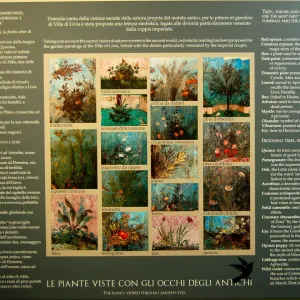
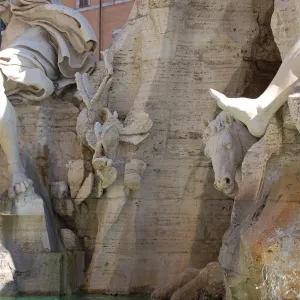
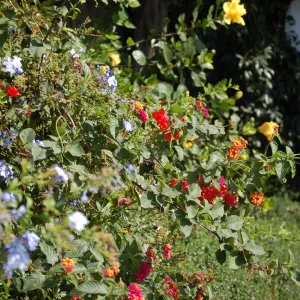
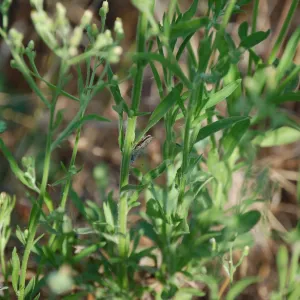
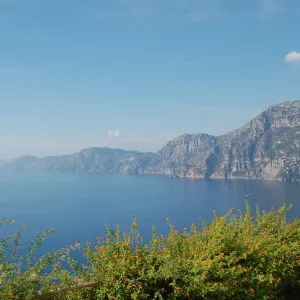
Last October my wife and I visited Italy to celebrate our anniversary. While in Rome we toured the Museo Nazionale Romano: Palazzo Massimo alle Terme, to see among other things one of my favorite statues, the 2nd –century BC Greek bronze, the Pugile (Boxer). Little did I realize that in the museum I would be motivated to look for the connections between the plants in Italy and the native and exotic plants in Texas.
On the second floor of the museum we saw frescos or painted panels, covering full walls that had been taken from various historic Roman buildings or homes. One of the most spectacular exhibits had been taken from the Villa Livia, one of the homes of Livia Drusilla, the wife of Caesar Augustus. Painted in the period of 30 BC to 20 BC, the frescos portrayed a wonderful garden of plants, birds and flowers. The painted garden had covered the walls of a half-under ground living and dining area, sunken to take advantage of the cooler ground temperature.
To aid visitors at the museum, an interpretive sign listed many of the plants, along with their painted picture, found in the garden frescos. Also the sign linked the plants to Roman deities and myths, which would have been meaningful to Augustus and his wife.
Even though the names of the plants were either family or common names but not necessarily species names, I found the listed plants among those that we presently value in the Hill Country. Cypress, Ilex (or holly), Laurel, Viburnum and Oak among the trees and Iris, Acanthus, Violet and Poppy among the shrubs caught my eye.
There were also names of plants that have now found their way to our area. Boxwood or Box (Buxus sempervirens) can be seen on a visit to any older subdivision in San Antonio. It lines many garden paths and also forms topiaries and even bonsai trees. During a long winter in Utica, New York, a line of boxwood on a neighbor’s property along the driveway caused me to carry enough shovels-full of snow to last a lifetime. Should I have included the ancient Romans in my mutterings?
As the interpretive sign indicates, even the ancient Romans knew of the toxicity of Oleander. Yet today it is frequently found planted in public areas and along roadways in Italy just as it is in Texas. The only difference is that Oleander is native to that part of the world.
Many of the early plant botanists of Texas, who found and named our Texas plants, had classical educations from the Old World. Many of the new species they found were really members of old plant families and connected our New World to the Old World of 2000 years ago.
At the Piazza Navona in Rome we saw the Fountain of the Four Rivers or Fontana dei Quattro Fuime, created by the famous Baroque artist, Lorenzo Bernini in 1651. One of the rivers depicted in the fountain represented an imaginary river in the New World, the River of Silver. But the explorers to the New World brought back more than silver. Included in the depiction I was surprised to see a prickly pear complete with tunas carved in stone. Unlike the ones we had left behind in Texas, this prickly pear was safe from prickly pear borers.
After we left Rome we went east to the coast. Texas tourists could have dropped off some of the plants in the gardens which we walked by. In one garden on a limestone hillside a prickly pear rose above the surrounding plants. I missed capturing the image of a butterfly in another garden, but was left with a nice picture of lantana mixed with the Bougainvillea, which comes from Brazil, mixed with blue plumbago, which comes from Africa.
Lantana is found in other parts of the world and this could have been a species from Africa. But it certainly appeared to be our Texas native, Lantana urticoides.
The Malta star-thistle that I photographed was healthy and right at home in its native environment. A native butterfly posed on its stem. The plant was growing en masse with other Malta start-thistles at the entrance to the ruins of the city of Herculaneum, buried under volcanic ash from the eruption of Mt. Vesuvius in 79 AD. These plants not only survived, some made it to North America.
Another plant that I saw was one that could have come from my yard. My friend, Kip Kiphart, who gardens for butterflies and knows everything about monarchs, gave me a native plant from Mexico, the Desert Fire Firecracker Fern (Russelia rotundifolia). Walking along a narrow street I looked up and saw what appeared to be the same plant growing from a planter. The plant was in bloom and happy in its place in the sun. I wondered if mine was doing as well.
It was a wonderful trip, made even more interesting by the connections that I found with the flowers and plantings. I was happy to leave the exotics in their native land, but wished that I could have brought back a large lake filled with the blue, blue water of the Mediterranean Sea.
